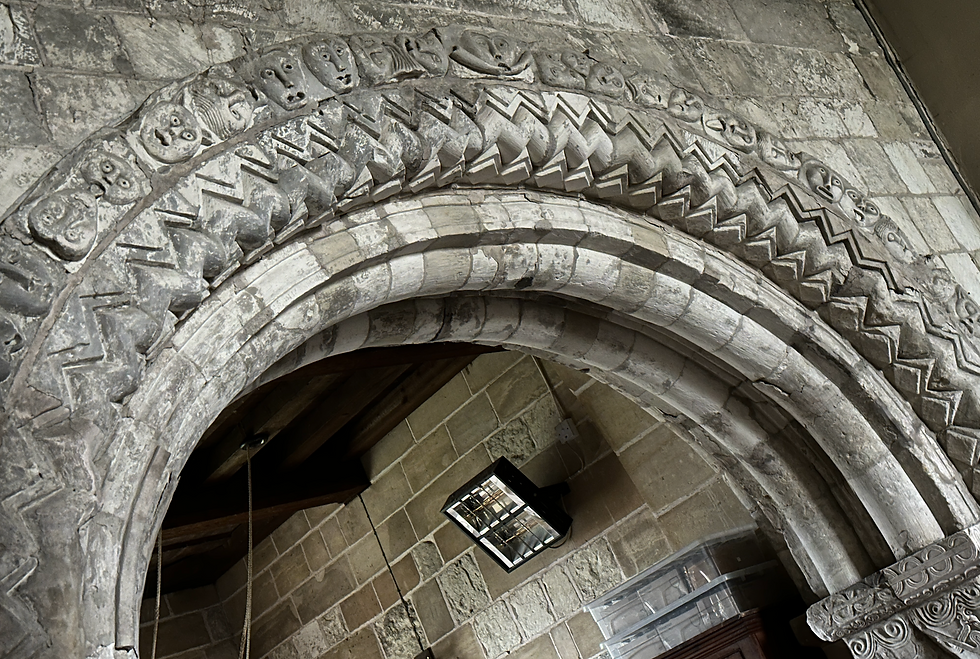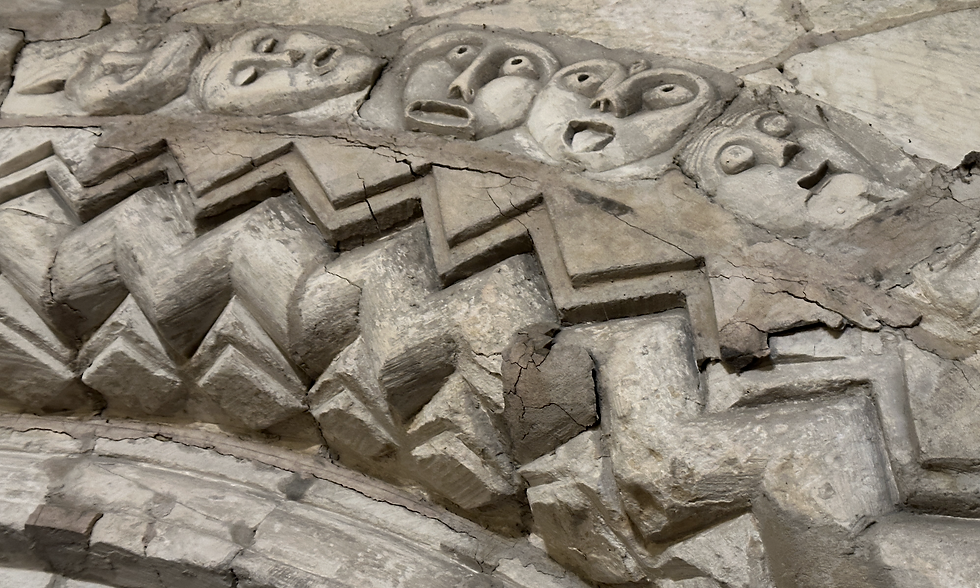St. James Church in Nunburnholme with its ancient stone cross carved by Anglo Saxon and Viking sculptors
- timbarber
- Jun 17, 2024
- 4 min read

Many villages in the Yorkshire Wolds were far more important before the Norman Conquest than they are today. Nunburnholme village is a prime example, where before 1066 the ground where the church now stands to the on the south west edge of the village had been consecrated and it is believed a wood and thatch church served a large busy village. This is very different from today, where Nunburneholme is a small, remote, quiet settlement a few miles from Pocklington.
But Christian worship had been going on much earlier than this, as proved by the Anglo-Viking stone cross discovered on the site in 1872. More about this later.

The village, church and surrounding area was laid waste during William the Conqueror’s Harrying of the North, which probably accounts for the ancient cross becoming lost on the site then used as building material when a new church was built.
Much of the church we see today is still pretty old, having been built during the reign of Henry III. The church was originally, the priory church of the Benedictine nunnery of St.Mary (which was situated about half a mile away and gives the village its name) and was built and paid for by Roger de Morley.

There are many nods to the architecture of the era with the thick round arches and decorated stonework around windows.

There is also a medieval font dating to the 1100’s.

Between 1872 and 1873, the church ( as were many in the Wolds) was restored by architect George Gilbert Scott. During this time the original Norman chancel arch was relocated and used as the tower arch. This highly carved archway with faces sculpted into the stonework is quite unique and worth a visit in its own right.



Then in 1902, Temple Moore, working for Scott, rebuilt the Tower, which was dedicated to Reverend Francis Orpen Morris, the Vicar who was also a famous ornithologist – who wrote many books on birds and campaigned for their protection (an early version of the RSPB).
But the most important element within the church historically is the pieces of Cross Shaft found during Scott’s Victorian restoration. When I visited, this remote village I met a Scandinavian scholar who explained why this find which is now on display in the church is so important.
There is a quote chosen by Richard Bailey in his book on Viking Age Sculpture taken from the book Middlemarch by George Elliot which could have been written specifically about the Nunburnholme Cross…
“The stone which has been kicked by generations of clowns, may come by curious little links of effect under the eyes of a scholar, through whose labours it may at last fix the date of invasions and unlock regions”
The academic had made the journey to see what he described as “the finest example of its type in East Yorkshire as both a work of art and a document of religious history in the North”
During the restorations part of the cross was found having been mounted into the south porch and south wall of the nave. It has been slightly damaged by the iron fixings. There is a socket on top of the cross shaft and it is believed there would have been a circular cross sitting on top during the Saxon period. It is believed this top part may still be hidden and incorporated somewhere in the present churches stonework.

But what is unique about the cross is its age, dating to the Saxon period and the fact it appears to have evolved in design during a period of great upheaval in Northern England, when Vikings had taken control of much of the Wolds.

There are other examples of Saxon preaching crosses around England and the North. It is known that these would have started to appear after 627 when King Edwin the Saxon King of Northumbria (which included Yorkshire), converted to Christianity to marry the Kentish princess Ethelburgh. They would have pre-dated churches and stood outside, to indicate the spot where a preacher would visit. The highly carved crosses would probably have been used as a visual aid during sermons.


Part of the cross itself dates to the late Anglo Saxon period. The sculptor carved a frieze with four small round heads whose outstretched arms grip the arches at the top corners. Other figures include Christ and Mary, a hooded monk, a priest performing mass and the crucifixion scene. There is also a figure, possibly David playing a harp. These images are all very much in an Anglo Saxon style.

But on the other side of the cross, the style of sculpture changes. It is obviously more Viking in style and it is believed that as Viking Halfdan had conquered the area, that the new Lord of the area containing Nunburnholme would have been of Scandinavian origin. Chopped into the cross, obviously by another sculptor is a haloed warrior figure and features a sword which mirrors the types of sword coming out of Norway in the 900’s. The Viking figure also appears to have strange mohican haircut which has led the figure to be nicknamed locally as “The Admiral”.

Another panel shows a scene from Sigurd – a Norse myth involving a dragon called Fahir guarding a hoard of gold and his death by Sigurd. The cross shows Sigurd eating dragon rings with an animal headed character called Regin. Whilst this is obviously Scandinavian in origin, below this in the same style shows a priest giving mass. This is a clear indication of the fact that within 100 years of arriving in England, the Vikings had started to convert to Christianity.

The final stage of the crosses evolution was a Norman addition where a centaur (a half man half horse figure) is shown with a child riding on its back. It is believed to be an allegorical reference to Jesus.
So an important historical find, spreading light on a period of history once known as the Dark Ages (as nothing was written down), but which we can see through the cross how life changed from a Christian Saxon community, to life under pagan Viking rule back to the Scandinavian invaders conversion to Christianity.
The Yorkshire Wolds has so many hidden gems and historic churches, more people should head out and explore the area. And if you do, make sure you stop at Nunburnholme Church.







Comments